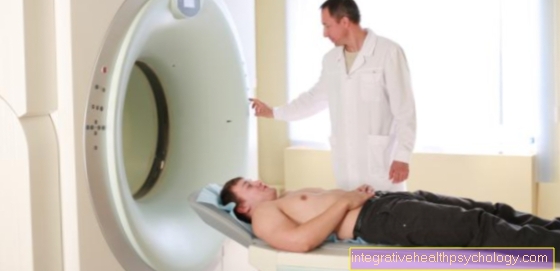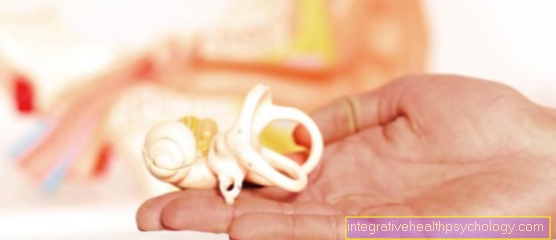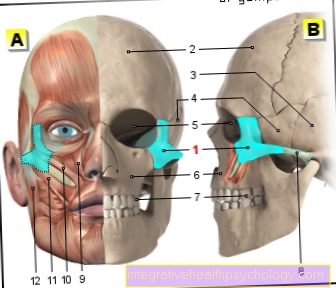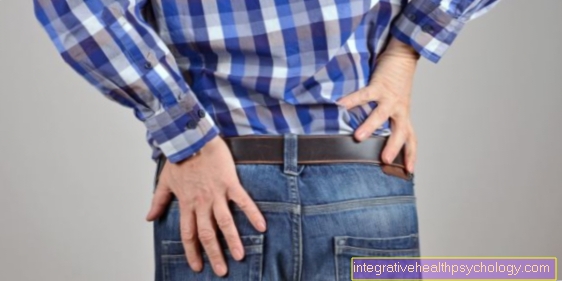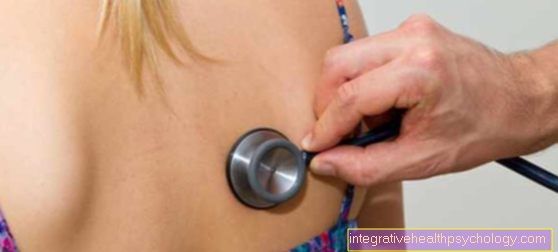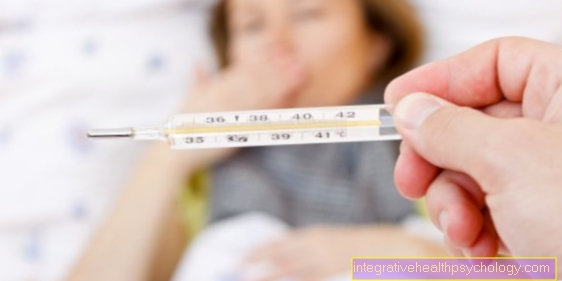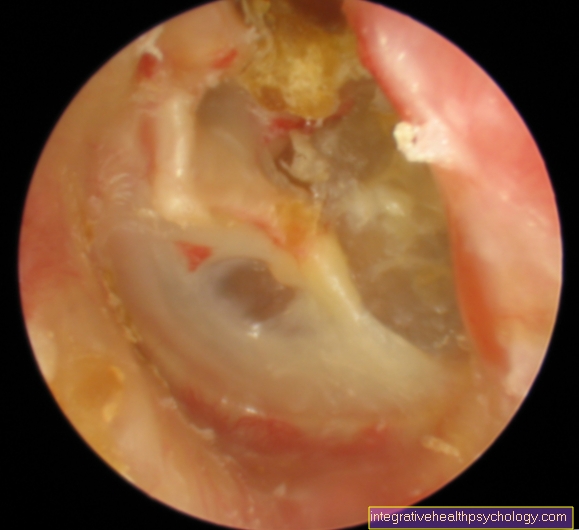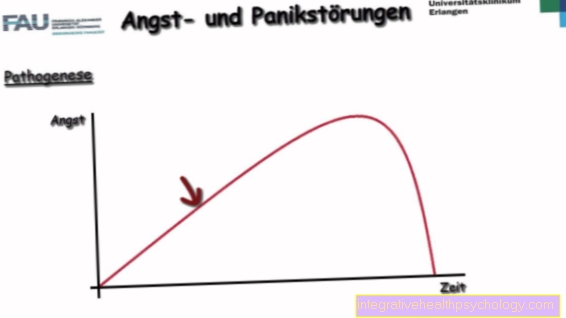Ventricular flutter and ventricular fibrillation
Synonyms in the broadest sense
Palpitations, electrical dissociation, cardiac arrest, defibrillator
Definition of ventricular fibrillation
In contrast to the Atrial fibrillation In ventricular fibrillation / ventricular flutter - as the name suggests - the chambers are the place where things happen.
In people with ventricular fibrillation and ventricular flutter this is Heart rate pathologically increased.
Note: Ventricular flutter is used from a frequency of 250 up to 350 Beats per minute. Ventricular fibrillation is when the frequency exceeds the 350 Beats per minute.
Note: ventricular fibrillation
Prolonged ventricular fibrillation is incompatible with life. Just as the pumping capacity is disturbed in atrial fibrillation, the pumping function of the chamber is disturbed in ventricular flutter / fibrillation. As a result, the circulation cannot maintain the organs are insufficiently supplied with blood; in fact ultimately to cardiac arrest.
Symptoms
The ventricular flutter quickly turns into ventricular fibrillation, causing it to become a Cardiovascula-Failure with breathing and Cardiac arrest comes. It quickly comes to unconsciousness because that brain when the extremely oxygen-sensitive brain is no longer supplied with enough blood. The patient can no longer be addressed, does not react to pain stimuli and the pupils are dilated and rigid (i.e. he no longer reacts to light stimuli).
Note: cardiac arrest
This condition is acutely life-threatening, if it is not treated quickly, the patient dies!
root cause
Ventricular flutter and fibrillation are an expression of electrical instability of the Heart.
The cause for this are mostly diseases of the heart, which lead to a structural change or functional impairment. These diseases include: CHD (Coronary artery disease), Heart failure (Heart failure), Dilation (overstretching) or aneurysms (bulging of the muscle wall) of the heart, Heart attacks and inflammation of the heart (e.g. myocarditis). Due to these diseases it can be too Extrasystoles come, which in turn can trigger micro-reentry cycles (see Atrial flutter / fibrillation).
In addition to the direct diseases of the heart, changes in the electrolyte balance (changes in the area of blood salts) can also promote the occurrence of ventricular flutter / fibrillation, especially Hypokalemia (too little potassium) and hypomagnesaemia (too little magnesium) are risk factors. Less common causes are electrical accidents, cardiac trauma (e.g. in traffic accidents) or strokes.
diagnosis
The diagnosis of ventricular flutter / fibrillation takes place via the EKG. The transition from one Ventricular tachycardia to ventricular flutter and fibrillation is flowing. Changed, broad QRS complexes can be seen, between which no line can be seen. While in ventricular flutter the QRS complexes usually follow one another regularly and the EKG is reminiscent of a saw blade, in ventricular fibrillation you only see chaotic QRS complexes of different width and height.
Therapy ventricular fibrillation
Acute treatment: In ventricular flutter and ventricular fibrillation, resuscitation by electric shock is started immediately (Defibrillation). On the Rib cage two plate electrodes are placed. In accordance with the EKG, direct current with an energy of 50 to max. 400 joules delivered. The doctor immediately recognizes success or failure from the ECG and the patient's reaction. If unsuccessful, the defibrillation is repeated twice and then after administration of adrenaline and Amidaron again.
Info: defibrillator
Unfortunately, in very few cases a doctor is on the spot immediately when ventricular fibrillation sets in. Many public places (e.g. airports) are therefore now being equipped with lay defibrillators. Lay defibrillators can also be used easily by people who have not been medically trained. An electronic voice gives precise instructions on how to use it. This opportunity should be used, i.e. one should not be afraid to take action in an emergency, because without treatment the patient dies.
Relapse prevention: The primary prevention of relapse is the implantation of an ICD (implanted cardioverter defibrillator). If the ventricular fibrillation occurs as a result of an acute myocardial infarction (i.e. within 48 hours after an infarction), no recurrence prophylaxis is necessary. In all other cases an ICD is implanted.
forecast
Prognosis Ventricular flutter and Ventricular fibrillation depends on the underlying disease, which may already have started revival by laypeople and the quick arrival of the doctor. The time between the doctor's arrival and the start of the event is particularly crucial. Everyone can help here! Find out about the possibilities of lay resuscitation, quick and correct action saves lives here! In Germany, only three to eight percent of patients are resuscitated after sudden cardiac death. In the US, the survival rate is significantly higher at 15 to 60 percent.
The highest survival rates are achieved in areas where lay defibrillators are publicly available.


